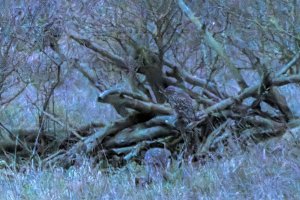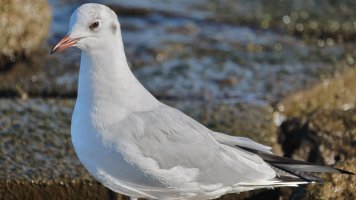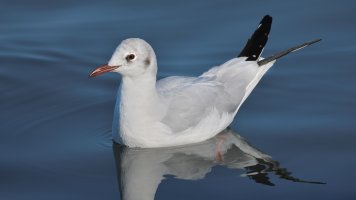The situation isn't quite that straightforward, but we are nevertheless probably in rough agreement:
I think you are in rough agreement

The only difference is the RF 100-500mm
The RF 800mm f/11 is a very nice lens and super value for money. But, you need a shorter zoom with close focussing to go with it for general nature photography. The RF 100-400mm does nicely fill that gap.
Like
@entoman I have that combination. However, I usually start the day (early) with the EF 100-400mm, for the wider aperture, but then swap to the 800mm f/11 as everything is usually just too far away. Once the 800mm is on the R5, it usually never comes off, until evening and the light gets lower*. This will probably change in the Spring/Summer when there are more flowers/insects to photograph, as the minimum focal distance would make this pretty hard!
However...
But, if you have the cash, the RF 100-500mm with TCs is much more versatile and gives me better results, and covers the range of the shorter zoom and long prime.
I think I would agree with this and will upgrade when the bank balance has recovered from the R5, but the RF 100-500mm + TCs works out quite expensive. (I could sell the EF 100-400mm to offset the cost, but my daughters are also into photography and are already arguing about who will get it when I upgrade)
Coming back to the topic, I would probably choose the 600mm F/4 as my first big white prime, if I had the money, for the occasions I could use it without carrying it too far, rather than anything longer and use TC to get extra reach. The idea of something intermediate, like 500/600mm F/5.6, for modest cost would be
much more appealing.
* When I said the 800mm f/11 usually comes off in the evening, on one occasion it didn't. Hesitant to share this image as it is far from a prize winner, but I was astounded what could be achieved with a modern camera, lens and software. First the back-story. We were out on an overcast day, late afternoon and had been watching a roosting short-eared owl, hoping it might wake up and fly closer. It didn't, but we stayed hoping to see a barn owl (as they were also in the area). They didn't show either, but we noticed some movement from the SEO. It was now quite dark and with optics could not make out what was going on, but it looked like there were now two owls. I pointed the camera at them and cranked up the ISO and increased the shutter speed until I could
see them through the viewfinder. For fun I fired off a few shots. Most were not good, but this one was taken 30 minutes
after sunset at
1/4 sec (no missing 0s)
handheld, 800mm f/11 with
ISO 51200.

Turns out there were 4 owls! A few minutes later we needed a torch to find the way back to our car




